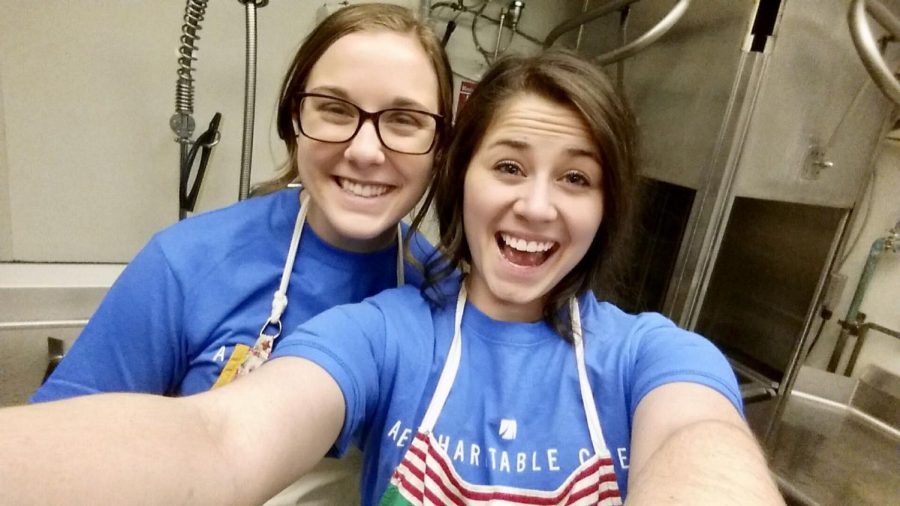It Takes a Village: Let’s Help works to break the cycle of poverty
January 14, 2018
“You never know who is in need. You may be sitting right next to someone in class that has been here and asked for help,” said Linda Krehes, executive director of Let’s Help.
Let’s Help has been a safety net for individuals facing adversity in Topeka since 1969. Their programs have developed and expanded, but their mission remains the same – to break the cycle of poverty.
Let’s Help is known by many for their hot lunch program that serves an average of 350 meals per day. The meals are available to anyone Monday through Friday from 11:30 a.m. to 1 p.m. as well as the second and fourth Saturdays of the month from 9:30 a.m. to 11 a.m.
{{tncms-inline content=”<p>&ldquo;Our programs provide opportunities for success in life."</p>” id=”22465180-5b3b-427e-ad94-7dd3efe4c9dc” style-type=”quote” title=”Programs” type=”relcontent”}}
Let’s Help’s very first initiative was to combat hunger for those in crisis. Krehes said that those efforts laid the groundwork for what Let’s Help is today. Now they not only provide basic needs like food and clothing, but they have expanded to provide education, job training skills and working force development programming to help people become self-sufficient.
“Our programs provide opportunities for success in life,” Krehes said.
The organization only has eight staff members and day-to-day functions are run almost entirely by volunteers. Volunteers work in all facets of Let’s Help and are a crucial part of the program according to Krehes.
“We could not do what we do without our volunteers,” Krehes said. “They just work around the clock. They are here for the right reason, they believe in our mission, they love our clients. It’s something that ignites passion within them when they can see a smile on someone’s face when they’re able to help someone in need.”
Let’s Help is one of many food pantries in Topeka, but what sets them apart, Krehes said, is their education programs.
Let’s Help offers a GED program that serves about 200 people each year. These are people who want to break the cycle of poverty, and the program aims to change the trajectory of their life.
“We give them what they need to move forward in life and to thrive instead of just surviving,” Krehes said.
The GED program is one of many programs Let’s Help offers, including employment programs and comprehensive emergency services programs. According to Krehes, these programs are what makes Let’s Help especially successful in breaking the cycle of poverty.
{{tncms-inline content=”<p>&ldquo;We give them what they need to move forward in life and to thrive instead of just surviving.&rdquo;&nbsp;</p>” id=”5e41d7b6-9d80-4fa8-b6cc-07609f3393ed” style-type=”quote” title=”Let’s help ” type=”relcontent”}}
Although Let’s Help’s greatest need is financial donations, the organization is always looking to recruit people who are wanting to give back to their communities. Student volunteers could potentially volunteer to help with clerical work, sorting and organizing donations in the clothing bank and tutoring in the education area.
Another way students can help is by hosting food drives. Let’s Help, like many food banks, relies on community donations to stock their pantries and when there aren’t enough, they are forced to purchase food.
The values of Let’s Help are reflected in what Krehes reminds her staff of, “We treat everyone with dignity and respect.”



